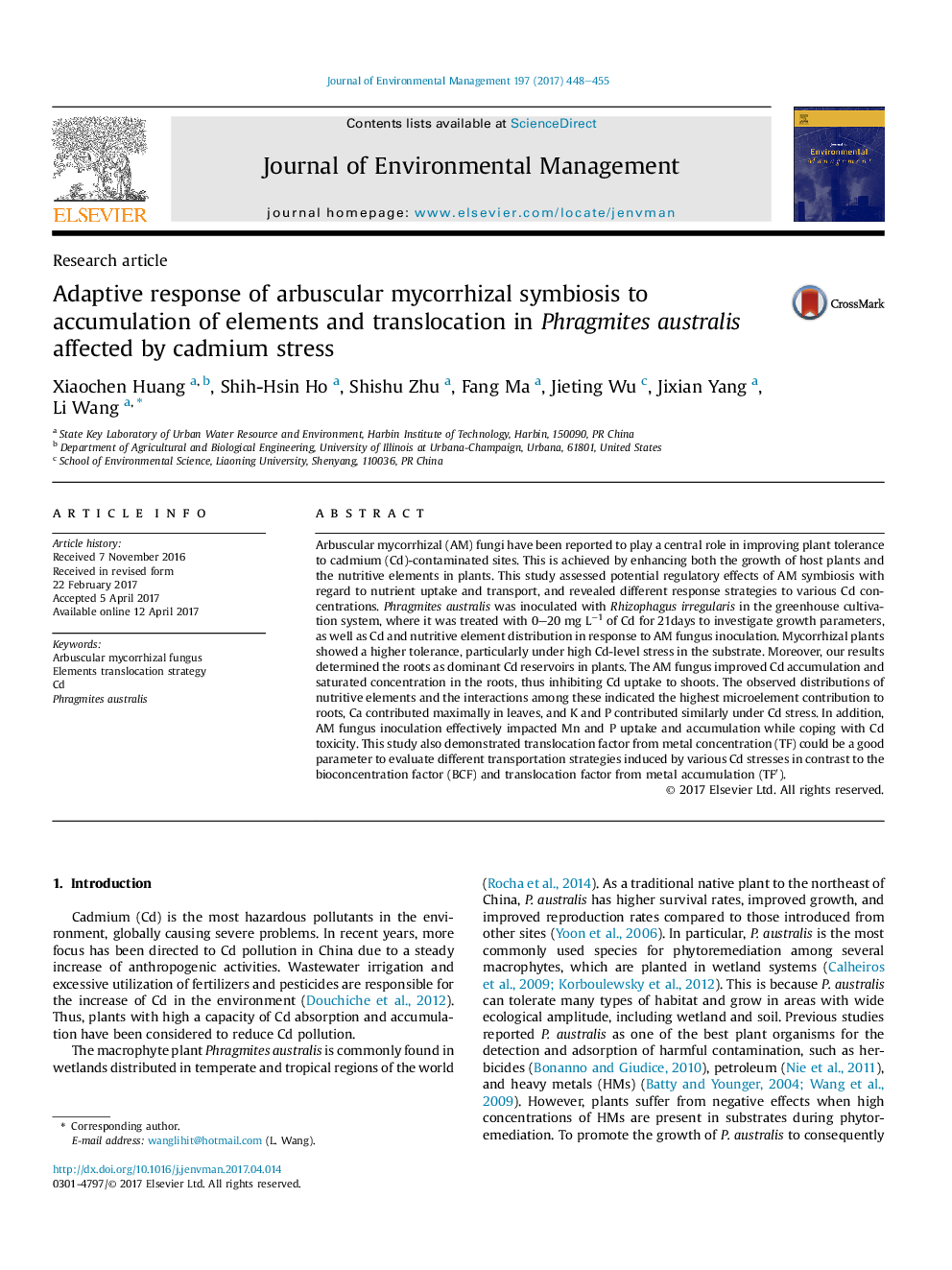| کد مقاله | کد نشریه | سال انتشار | مقاله انگلیسی | نسخه تمام متن |
|---|---|---|---|---|
| 5116970 | 1485219 | 2017 | 8 صفحه PDF | دانلود رایگان |

- Arbuscular mycorrhizal fungi alleviate Cd toxicity of plants via flexible pathways.
- Arbuscular mycorrhizal fungi affect the Mn and P distribution under Cd stress.
- Synergistic effects among elements were found via principal component analysis.
- Arbuscular mycorrhizal symbiosis is a viable indicator for Cd phytoremediation.
Arbuscular mycorrhizal (AM) fungi have been reported to play a central role in improving plant tolerance to cadmium (Cd)-contaminated sites. This is achieved by enhancing both the growth of host plants and the nutritive elements in plants. This study assessed potential regulatory effects of AM symbiosis with regard to nutrient uptake and transport, and revealed different response strategies to various Cd concentrations. Phragmites australis was inoculated with Rhizophagus irregularis in the greenhouse cultivation system, where it was treated with 0-20 mg Lâ1 of Cd for 21days to investigate growth parameters, as well as Cd and nutritive element distribution in response to AM fungus inoculation. Mycorrhizal plants showed a higher tolerance, particularly under high Cd-level stress in the substrate. Moreover, our results determined the roots as dominant Cd reservoirs in plants. The AM fungus improved Cd accumulation and saturated concentration in the roots, thus inhibiting Cd uptake to shoots. The observed distributions of nutritive elements and the interactions among these indicated the highest microelement contribution to roots, Ca contributed maximally in leaves, and K and P contributed similarly under Cd stress. In addition, AM fungus inoculation effectively impacted Mn and P uptake and accumulation while coping with Cd toxicity. This study also demonstrated translocation factor from metal concentration (TF) could be a good parameter to evaluate different transportation strategies induced by various Cd stresses in contrast to the bioconcentration factor (BCF) and translocation factor from metal accumulation (TFâ²).
Different translocation strategies of AM symbiosis with regard to Cd and elements under low (left) or high (right) Cd stress. Different letters indicate the different organs of P. australis in which various mechanisms occurred and the spot sizes indicate their levels. Solid lines denote the roles of AM fungus in response to Cd toxicity in this study. Dashed lines denote possible mechanisms of AM fungus to alleviate Cd toxicity, which will be illustrated in a further study.199
Journal: Journal of Environmental Management - Volume 197, 15 July 2017, Pages 448-455